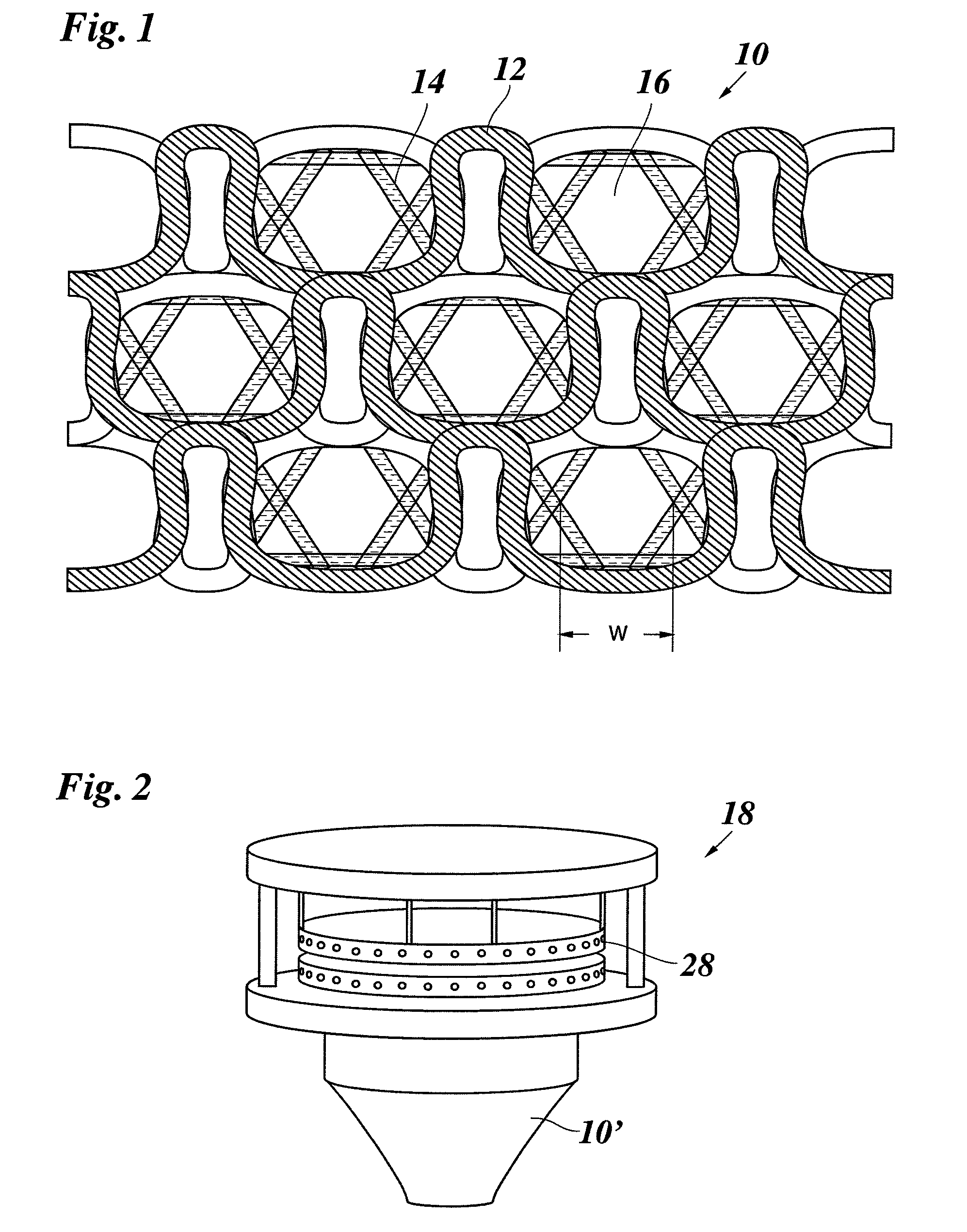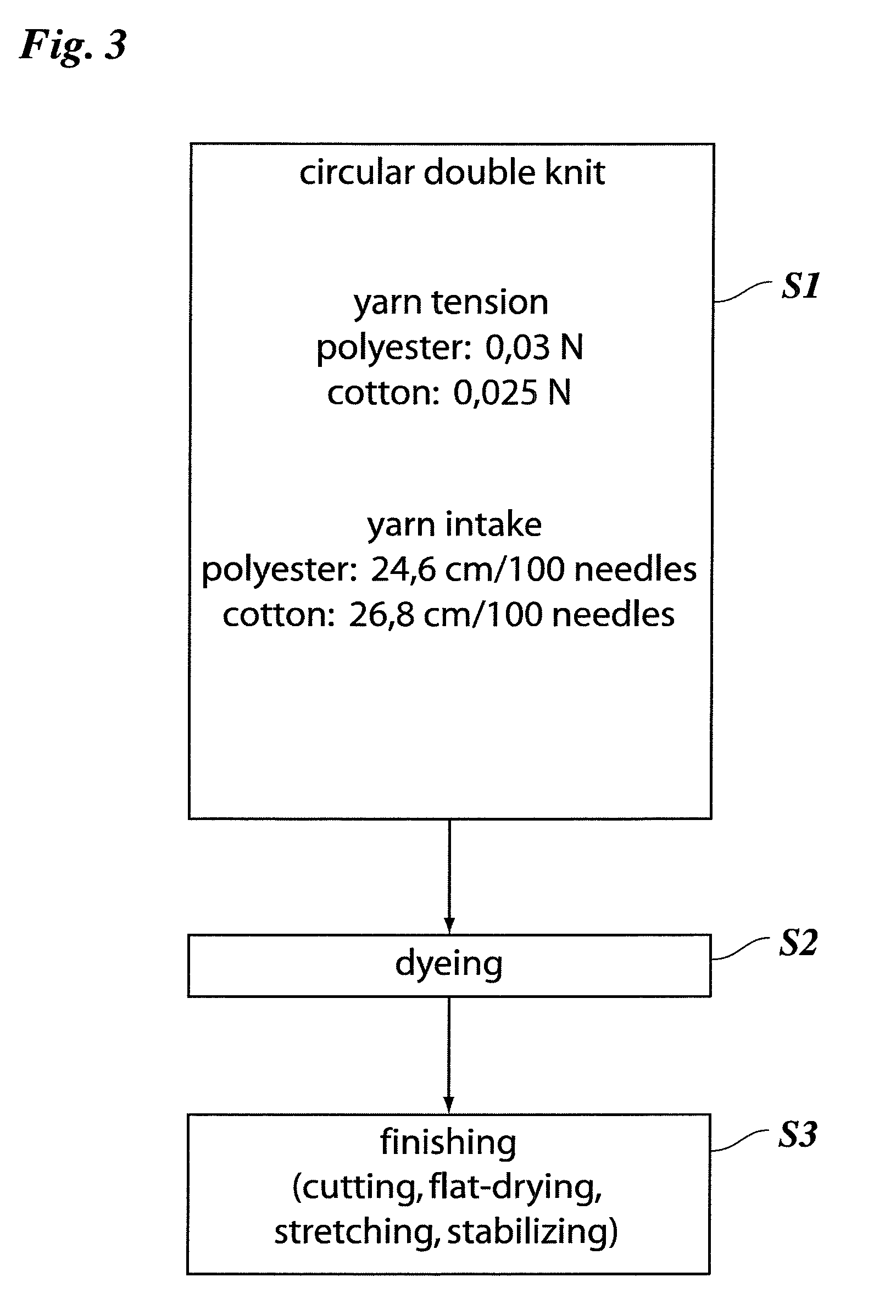UV-transmission fabric, method of obtaining the same and garment being made of the said fabric
- Summary
- Abstract
- Description
- Claims
- Application Information
AI Technical Summary
Benefits of technology
Problems solved by technology
Method used
Image
Examples
example 1
Measurement of UV transmission (i.e. energy intensity of UV radiation passing through versus energy intensity of incident radiation) of yarns and fabrics can be done using a spectrophotometric analyser. Such measurements have for example been described in the research disclosure called “Examination of the absorption properties of various fibres in relation to UV radiation”, by Joanna Alvarez c.s., as published in AUTEX Research Journal, Vol. 3, No 2, June 2003. In the paragraph called “UV spectrophotometric method of measuring the UV penetration index” a method for determining UV transmissiveness is described using a DK-2A spectrophotometer from Beckman. The fabrics are measured as such, the yarns are measured by making a so called “Hollander Weave” of the pure yarn and measuring the resulting fabric. The Hollander Weave is type of plain weave, in this case with the warp wires of the same diameter than the weft wires. The weave is very dense with virtually no apertures, therefore, t...
example 2
Since the UV transmissive properties of the yarns, as outlined here-above, depend on many parameters and interdependencies of these parameters, the properties of suitable yarn cannot be specified simply by giving exact ranges for these parameters. This would unduly restrict the scope of the invention. Therefore, the yarns for use according to the invention are specified by the required UV transmissiveness. Relevant yarn parameters (such as material, thickness, number of filaments etc) that may influence this UV transmissiveness are disclosed under example 1, and the result of changes for these parameters can be directly and positively verified by the UV-transmission test as described here-above. With respect to a fabric made by using these yarns, the UV transmissiveness not only depends on the type of yarns used but also on the method of interweaving, the applied dyestuff, the optional use of additives etc. Therefore, with respect to the UV transmissiveness of the fabric, it is clea...
example 3
A fabric according to the invention can be made according to any suitable interweaving method, as long as meshes are provided that lead to the UV transmission rates as specified in the appended claims. Methods usable in the present invention are for example described in “Knitting Technology: A Comprehensive Handbook and Practical Guide to Modern Day Principles and Practices” by David J. Spencer (1989). Other sources of suitable methods are for example “Wellington Sears Handbook of Industrial Textiles” by Sabit Adanur (1995) and “Handbook of Weaving” of the same author (2001).
Common types of interweaving which appear to be suitable for obtaining a fabric according to the invention are the commonly applied “weft knit”, e.g. a double-knitting method (also called “double Jersey”) which is typically used for circular knitting, and a “warp knit” which is typically used for flat knitting. With these types of interweaving five types of fabric which fulfil the UV transmission demands of the ...
PUM
| Property | Measurement | Unit |
|---|---|---|
| Fraction | aaaaa | aaaaa |
| Fraction | aaaaa | aaaaa |
| Fraction | aaaaa | aaaaa |
Abstract
Description
Claims
Application Information
 Login to View More
Login to View More - R&D
- Intellectual Property
- Life Sciences
- Materials
- Tech Scout
- Unparalleled Data Quality
- Higher Quality Content
- 60% Fewer Hallucinations
Browse by: Latest US Patents, China's latest patents, Technical Efficacy Thesaurus, Application Domain, Technology Topic, Popular Technical Reports.
© 2025 PatSnap. All rights reserved.Legal|Privacy policy|Modern Slavery Act Transparency Statement|Sitemap|About US| Contact US: help@patsnap.com


